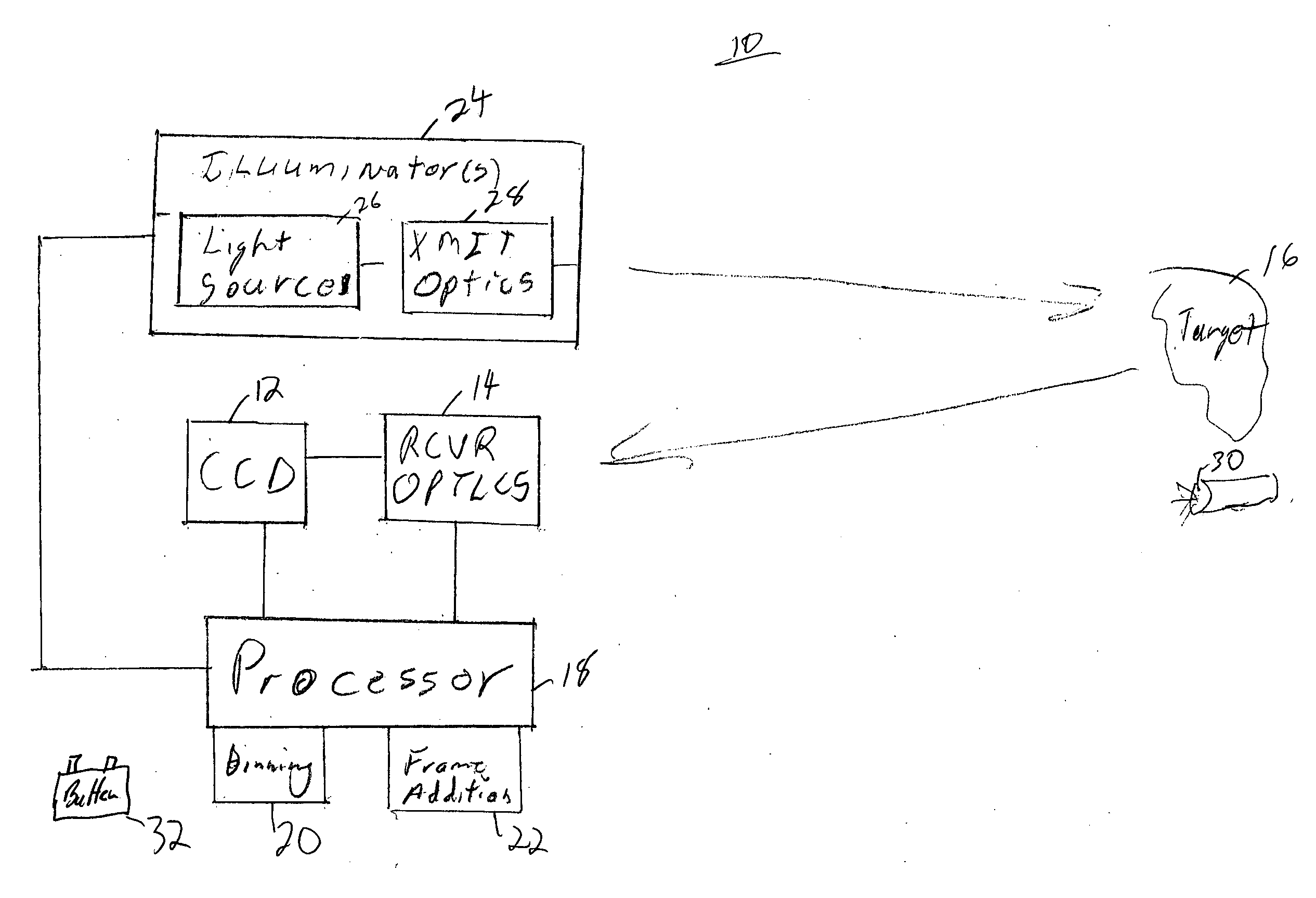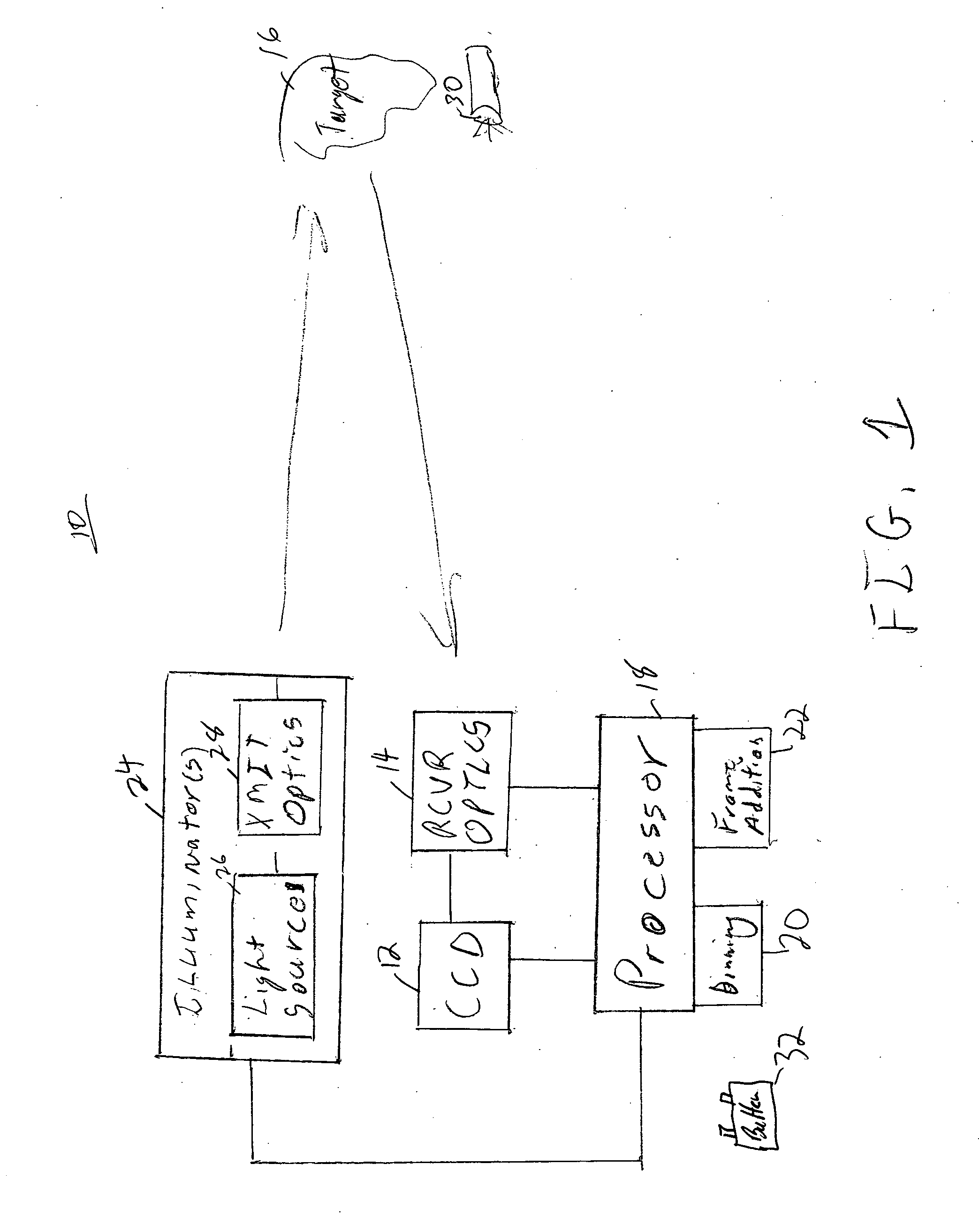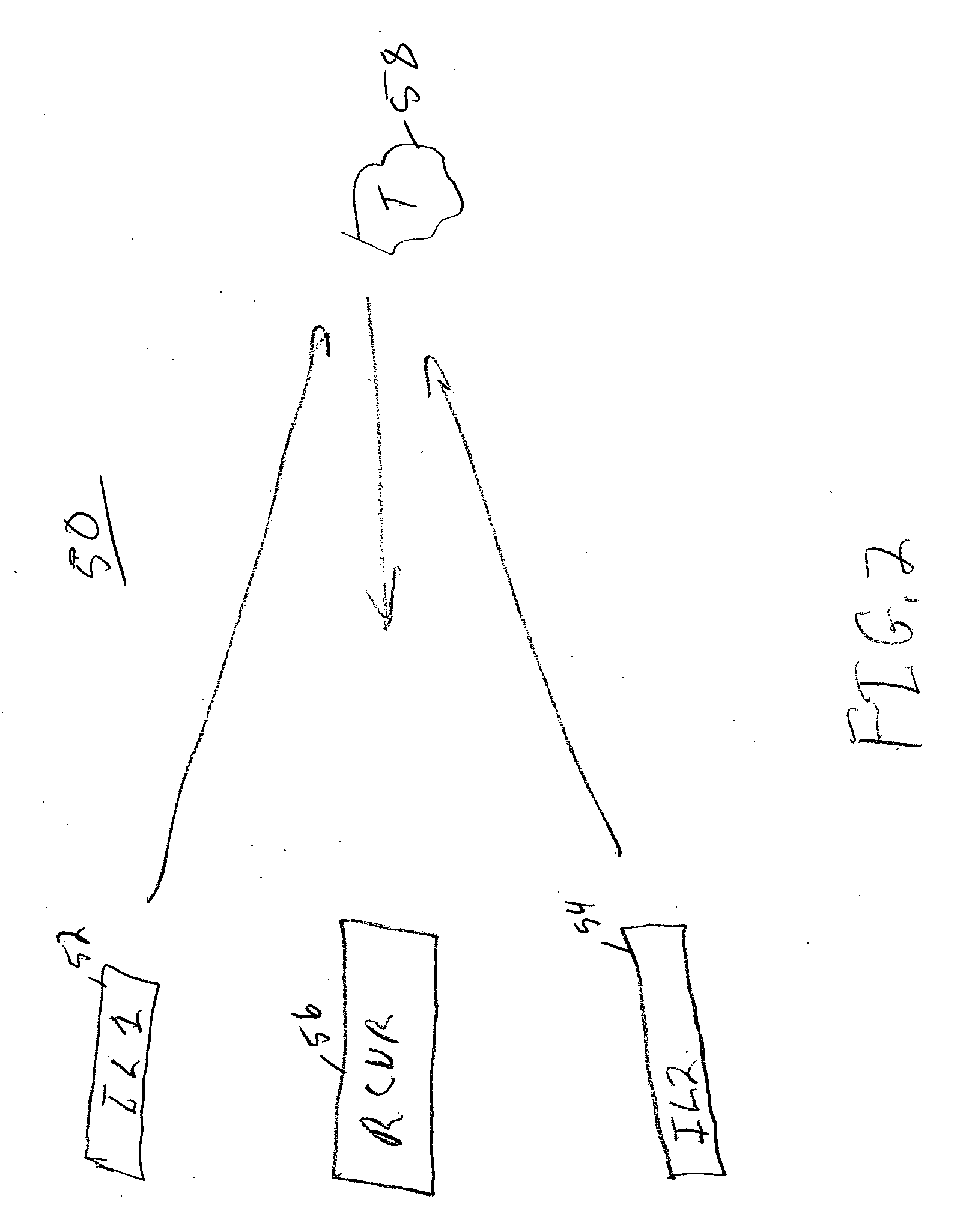Night vision technology: broad band imaging
- Summary
- Abstract
- Description
- Claims
- Application Information
AI Technical Summary
Benefits of technology
Problems solved by technology
Method used
Image
Examples
Embodiment Construction
[0011]The invention is directed to a night vision system that has an illuminator that transmits light towards a target using light outside the visible spectrum. A receive optics focuses an image on a charge coupled device. This system with an ultraviolet illuminator allows the night vision system to view images beyond 2500 meters, while present systems are limited to around 800 meters. The illuminator is generally a high peak power pulsed light source. A processor uses frame addition techniques to increase the captured light and may use binning techniques to increase the signal to noise ratio. The system may use multiple illuminators and capture images at a number of different wavelengths.
[0012]FIG. 1 is a block diagram of a night vision system 10 with broad band imaging in accordance with one embodiment of the invention. The system 10 includes a charge coupled device (CCD) 12 or other multi-pixel detector. A receive optics 14 focus an image of a target 16 on the CCD 12. The CCD 12 ...
PUM
 Login to View More
Login to View More Abstract
Description
Claims
Application Information
 Login to View More
Login to View More - R&D
- Intellectual Property
- Life Sciences
- Materials
- Tech Scout
- Unparalleled Data Quality
- Higher Quality Content
- 60% Fewer Hallucinations
Browse by: Latest US Patents, China's latest patents, Technical Efficacy Thesaurus, Application Domain, Technology Topic, Popular Technical Reports.
© 2025 PatSnap. All rights reserved.Legal|Privacy policy|Modern Slavery Act Transparency Statement|Sitemap|About US| Contact US: help@patsnap.com



